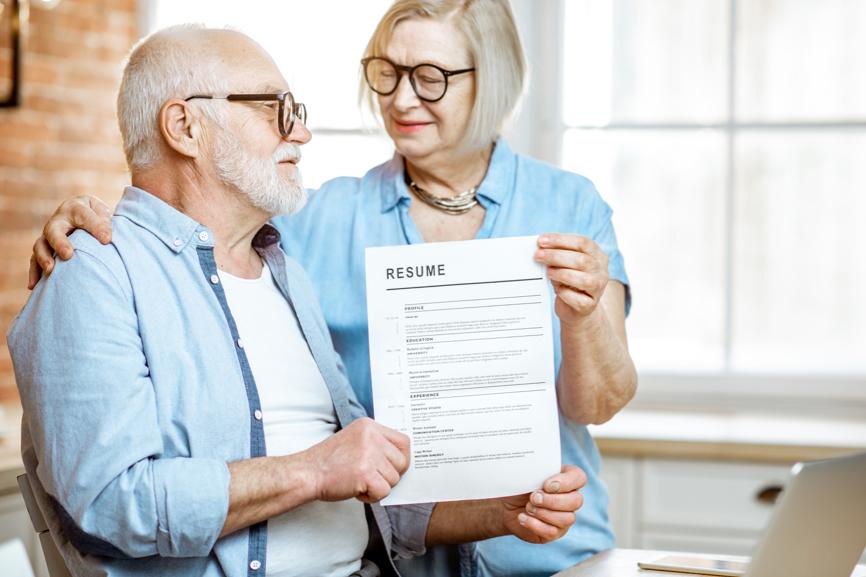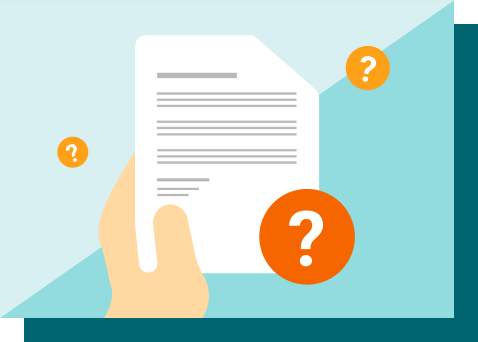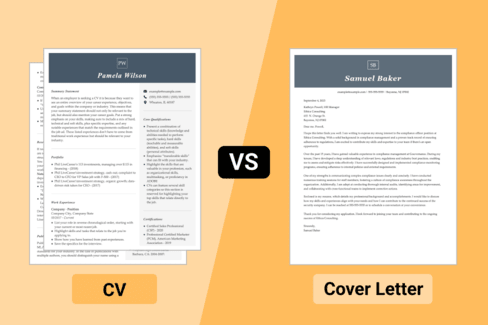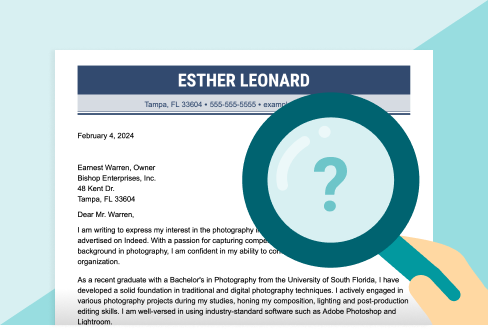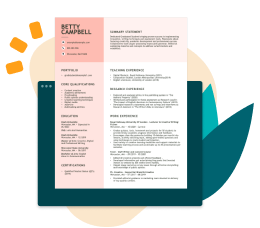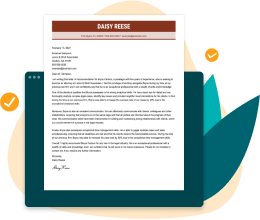10 Cover Letter Tips for Older Workers
Whether you’re changing roles or returning to work after retirement, you’ll need a compelling cover letter that positions you as a great worker. Follow these expert tips to impress recruiters and land an interview!
Why Cover Letters Matter for Older Workers
Job searching in your fifties or sixties comes with both advantages and challenges. You bring decades of experience and deep industry knowledge. However, some employers may (consciously or not) question your fit with younger coworkers and your skill set’s relevance.
Writing a cover letter that’s modern and strategic is crucial for older job seekers. While age discrimination is illegal, many mature job seekers feel their age has been a barrier in the hiring process. A well-crafted cover letter gives you the chance to address concerns proactively and highlight the value you bring to today’s workforce.
A compelling letter helps you highlight the accomplishments that matter most rather than try to cover your entire career. With the help of our Cover Letter Generator, you’ll be able to write a cover letter that positions your experience as a strength, not a setback.
Key Cover Letter Tips for Older Workers
As you work on your cover letter, ensure you’re keeping these tips in mind for a standout application that shows recruiters your age shouldn’t be a reason not to hire you.
1. Tailor your cover letter for each job.
Customizing your cover letter for each job application might seem like a lot of work, but it’s key to capturing the hiring manager’s attention. Besides, you don’t need to write a brand new letter from scratch each time you apply for a job. These are some easy edits you can make to your letter to ensure you’re meeting the job requirements.
- Include the company’s details in your cover letter header.
- Mention the specific role or company you’re applying for.
- Change up your skills to reflect the required qualifications.
- Highlight accomplishments that reflect you can meet the company’s needs.
- Research the company to match their culture and values.
2. Emphasize your most recent and relevant accomplishments.
Highlighting your most recent accomplishments gives employers the clearest picture of who you are today as a professional. While your long career history is valuable, hiring managers are most interested in what you’ve done lately, especially work that aligns with the role you're applying for.
Rather than listing only the achievements you’re most proud of, focus on those that demonstrate the specific skills, training, and experience the employer is looking for.
3. Highlight your adaptability and up-to-date skills.
In today’s quickly-evolving workforce, employers value candidates who can keep up. Use your cover letter to show that you’re as adaptable as you are experienced. Share examples that demonstrate your willingness to learn new systems, tools, or processes; for instance:
- Recently completed online training or certifications
- Familiarity with tools like Zoom, Google Workspace, or industry software
- Experience collaborating in remote or hybrid teams
- Times you helped implement or adapt to change in the workplace
These details help counter age-related assumptions and position you as a flexible, forward-thinking candidate.
4. Keep your letter focused on one or two qualifications.
Your cover letter isn’t meant to recap your entire resume. Instead of listing everything you’ve done, choose one or two key qualifications that closely match the job and build your letter around them.
Ask yourself: What strengths make me a great fit for this specific role? Then, briefly explain how you’ve used those skills to deliver results. Keeping your message focused helps employers quickly see the value you bring, and makes your letter more memorable.
PRO TIP
5. Address employment gaps with confidence.
If you’ve taken time away from the workforce—whether for health reasons, a career change or even retirement—it’s better to address it briefly in your cover letter than ignore it altogether. Employers appreciate honesty and context, especially when it’s paired with a clear explanation of how you’re ready to contribute now.
Keep it positive and focused on what you want to achieve in the future. You might mention any relevant skills you developed during your time away, such as volunteer work, courses, or consulting. Then, pivot quickly to why you're a strong fit for the role today.
For example:
6. Reassure employers of your work ethic and attitude.
For older workers, showcasing a strong work ethic and a team-oriented attitude can help combat stereotypes about being rigid and difficult to work with. Use your cover letter to show that you’re reliable and genuinely excited about contributing.
Share a brief example that illustrates your dedication, such as going above and beyond for a project or mentoring junior colleagues.
Phrases you might include:
- “I take pride in being dependable and results-driven…”
- “I enjoy collaborating across teams and learning from others…”
- “I’m excited to contribute my experience while continuing to grow…”
7. Show how you fit into the organization’s culture.
Cultural fit matters just as much as skills, especially for older workers who may be joining multigenerational teams. Use your cover letter to show that you’ve done your research and understand the company’s values, work style, and mission.
Look at the job posting and company website for clues. Do they emphasize collaboration, innovation, community impact, or continuous learning? Tie those values to your own experiences to demonstrate you’ll mesh well with the team.
For example:
8. Make your cover letter one-page long.
Hiring managers receive dozens of applications per job, so if you want to make their job easier (and score brownie points), keep your cover letter short and concise. Your letter should be one page long and ideally three to four paragraphs that get straight to the point.
PRO TIP
9. Pay attention to the tone and terminology you use.
The language in your cover letter should sound confident and aligned with today’s workplace. Avoid overly formal or outdated phrases like “Dear Sir or Madam” or “I am writing to express my sincerest interest.” Instead, aim for a conversational yet professional tone that feels natural and engaging.
Also, be mindful of the terminology you use. Refer to tools and industry practices in a way that shows you're up to date. Using relevant, modern language reassures employers that you’ll fit in with a younger or multigenerational team.
10. Use a fresh and modern cover letter template.
Presentation matters when you're trying to stand out in a competitive job market as an older job seeker. Using a clean, modern cover letter template instantly signals to employers that you're up to date and professional. Outdated designs, cluttered formatting, or hard-to-read fonts can unintentionally make you seem behind the times.
A well-designed template helps structure your letter for readability, making it easier for hiring managers to scan your key points quickly. Look for layouts with clear headings, balanced white space, and contemporary fonts.
PRO TIP
Cover Letter Mistakes Older Workers Should Avoid
Even with decades of experience, a few missteps in your cover letter can hurt your chances of getting hired. Here are common cover letter mistakes older workers should watch out for, and how to avoid them:
- Not following the right cover letter format. A classic cover letter format consisting of a formal letterhead, an intro paragraph, one or two body paragraphs, and a compelling closing makes your letter easier to read. Avoid large blocks of text, use a readable font, and keep it to one page.
- Repeating the same information on your resume. Your cover letter should complement your resume, not copy it. Use it to explain why you're a strong fit, highlight one or two standout accomplishments, and show enthusiasm for the role.
- Starting your letter with a generic greeting. Open with a personalized greeting when possible (e.g., “Dear [Hiring Manager’s Name]” or “Dear Sales and Marketing Team Lead”). Generic openings like “To whom it may concern” can feel impersonal and outdated.
- Listing your entire work history. Avoid turning your cover letter into a recount of every single job you’ve had. Focus on your most recent and relevant experiences, and ensure they align with your target role.
- Mentioning job duties instead of unique achievements. One big cover letter mistake many job seekers make is listing responsibilities instead of accomplishments. Job duties are the same across candidates with similar backgrounds, so stand out by focusing on the goals you met.
- Lack of measurable results. Simply stating what you did without numbers to back it makes your cover letter weak. Whenever possible, include numbers or outcomes such as “increased efficiency by 25%” to demonstrate your impact. Quantifiable achievements carry more weight than vague claims.
- Not optimizing for the ATS. Incorporate keywords from the job description naturally in your letter to show you meet key role requirements. Many companies use applicant tracking systems (ATS) to screen applications, so this can improve your chances of getting seen.
- Forgetting to include referrals. If someone referred you, mention their name early in your letter. Referrals in a cover letter can boost your credibility and help your application stand out.
- Talking about salary expectations. Unless the job posting asks for it, don’t mention salary in your cover letter. It can come off as presumptive or shift focus away from your qualifications.
Cover Letter for a Retired Person Going to Work
Use this sample cover letter for a retired person returning to work as inspiration when writing your own. Click on it to customize your letter with your unique skills and accomplishments.
Frequently Asked Questions
How do I write a cover letter?
To write an effective cover letter, analyze the job ad for the skills and qualifications you should highlight. Include a business letter header with the recipient’s details and yours and an intro paragraph that states your interest in the role. Expand on one or two key accomplishments in your letter’s body and close with a strong call to action.
How to address a cover letter?
Addressing your cover letter to a specific person is key to making a strong first impression with employers. Many job seekers make the mistake of using a generic phrase like “To Whom It May Concern,” but this outdated practice only signals a lack of effort. Go the extra mile by using LinkedIn or the company website to find the name of your hiring manager.
How to close a cover letter?
Your cover letter’s closing paragraph is your chance to “seal the deal” with employers by providing a brief overview of what makes you an ideal candidate and confidently imploring employers to give you an interview. Opt for confidence, not arrogance; and share your availability for future meetings.
Can I use AI to write my cover letter?
Yes. Natural language model chats like ChatGPT or Gemini are helpful tools that can get you out of a writer’s block and aid you in writing a strong cover letter. However, you should never submit an AI-generated cover letter without first editing it with your unique skills and achievements. Check out our list of the best AI Cover Letter Generators you can use.



